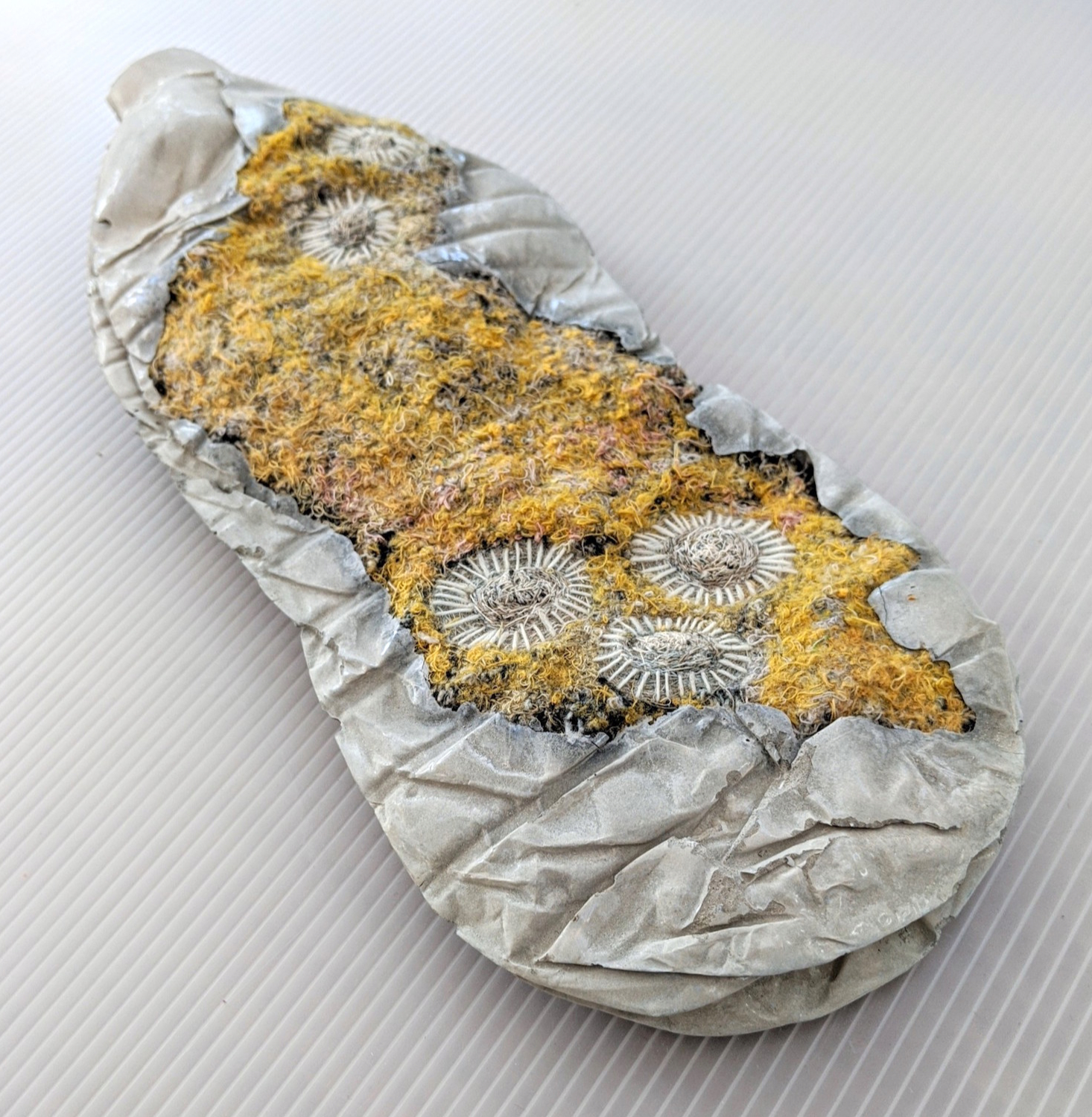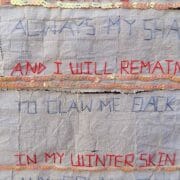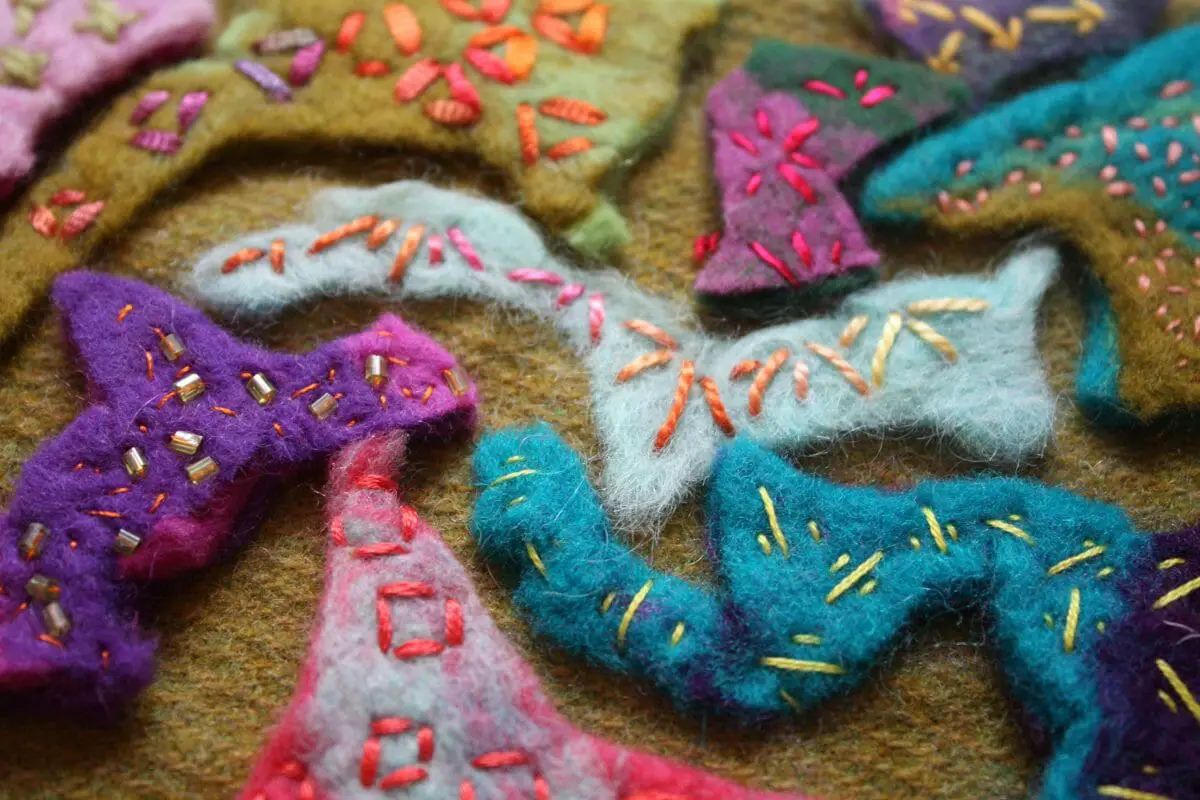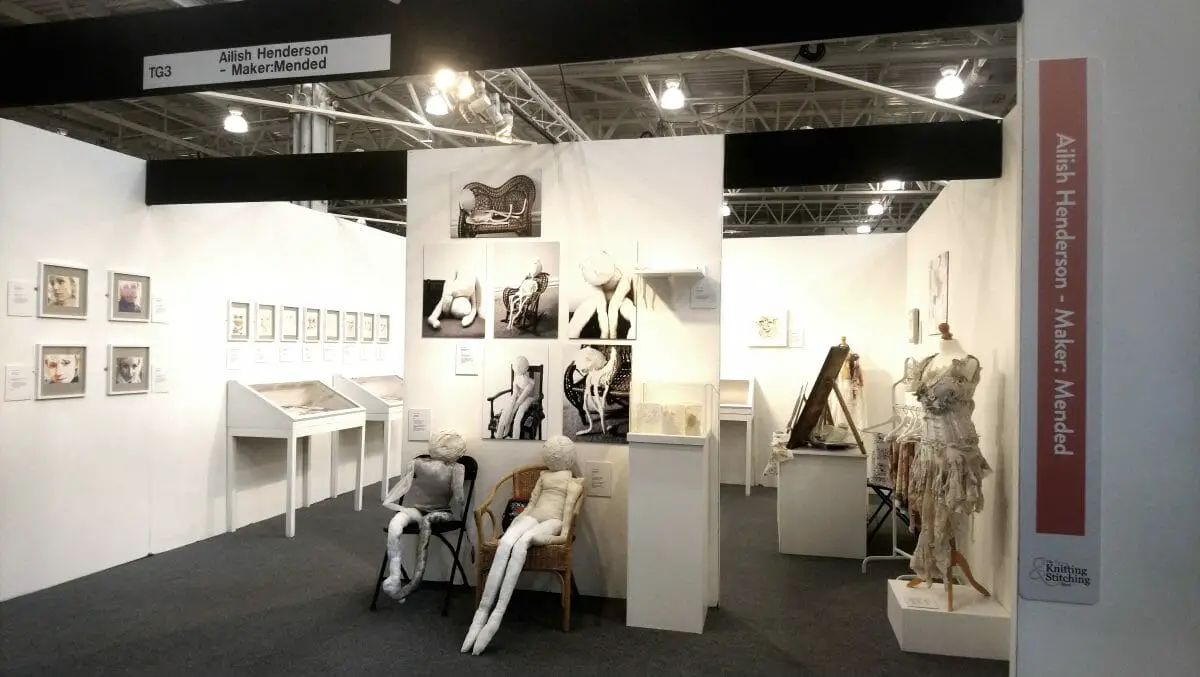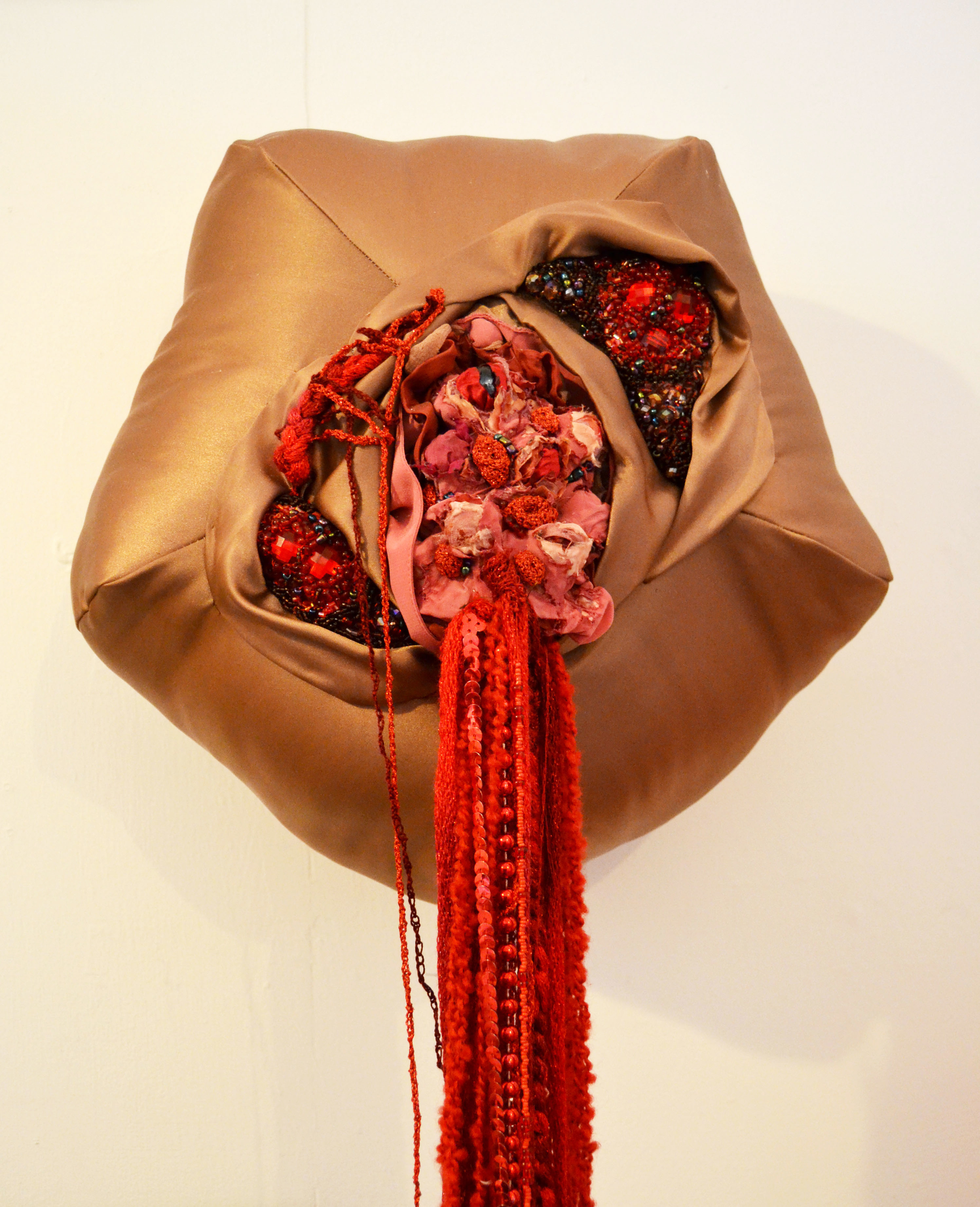
Welcome to the Ailist, where we look inside the world of textile arts with artist profiles, real life experiences at shows and workshops to help you plot your own path in this creative sector! I’m Ailish Henderson, thank you for joining me!
Who is Nerissa Cargill Thompson?
Nerissa Cargill Thompson is a designer, maker and facilitator with over 25 years experience of professional and community practice. Originally she trained in Theatre Design but through her community arts practice, her interest in fibre art grew and a desire flourished to develop personal artwork.
She returned to college to develop her skills, graduating from MA Textile Practice from Manchester School of Art in 2018.
All Washed Up
She is often inspired by the coast, as we all know, the sea ain’t the cleanest of environments, sadly it is often used as the nations floating bin. So in a “making good out of bad” way, she uses the textures from the waste plastics she finds on the shores near where she lives, to develop her sculptures.
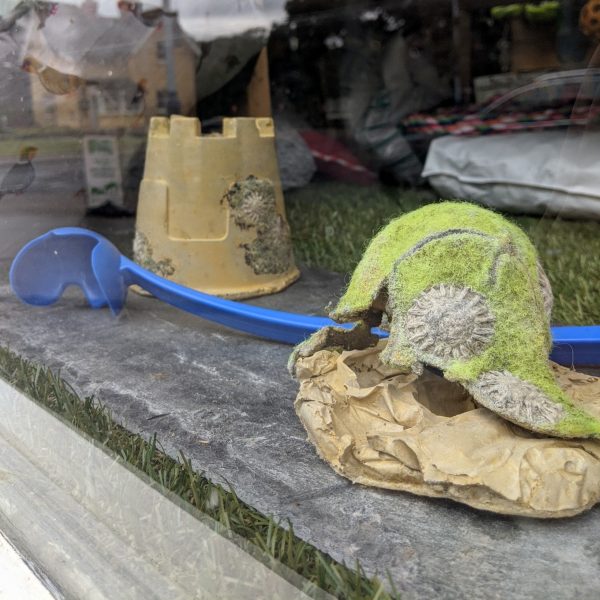
She uses a combination of techniques, embroidery and embellishing in colours and tones suited to the sculptural piece she is making.
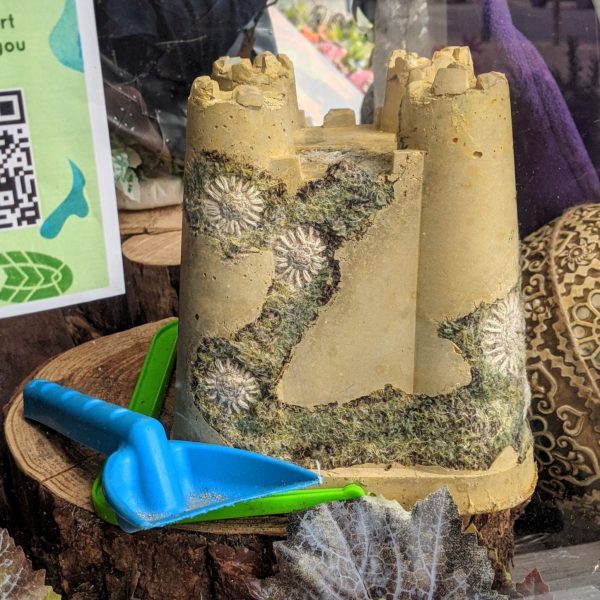
I like how she brings other materials to the table, ones not normally associated with embroidery and textile art, such as concrete and cement.
This random combo makes her work more contemporary and gives an interesting contrast between the manmade structure of the packaging and the soft natural textures found within the threads and fibres she incorporates – it’s like a fight of materials – totally opposite in nature.
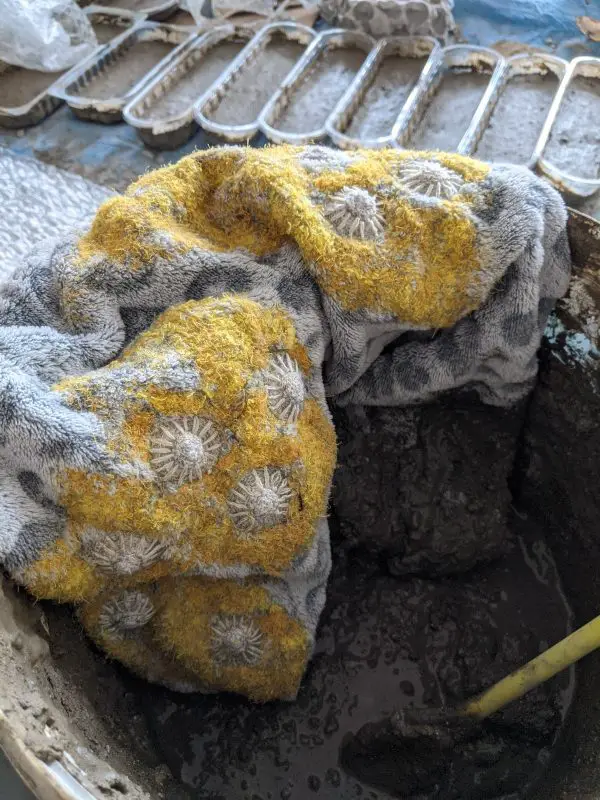
This contrast makes me feel like a child in a museum, the type where you are encouraged to pick up and observe the objects displayed – what does her work feel like? Is it heavy or light? What does it do when you pick it up, sag?
Recycling Matters
It is not just what the sea coughs up that inspires Nerissa Cargill Thompson; a lot of her work is also set to highlight climate change and plastic pollution on solid ground. She is even given ideas on the every day school-run walk, noticing all the rubbish which will either stay sat around or move on to watery depths. Most of us take the morning flurry of the school run either with bleary eyes or a whirlwind panic – somehow she manages to glean inspiration along the way!
Why does she focus on this issue within her work? Really it is her own way of vocalising a world wide issue, to make everyone think again before they loosen their hand on that plastic cup or package.
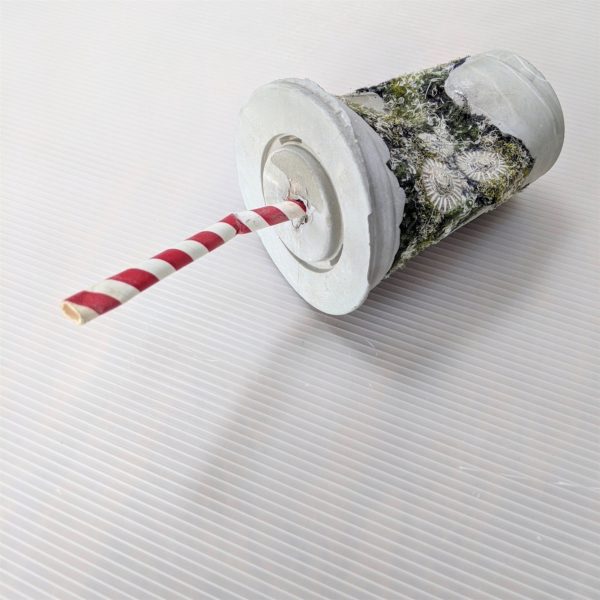
A drinks bottle seems so innocent, lightweight and insignificant, yet they are lethal weapons environmentally. On discussion with Thompson herself, she divulged that she casts these bottles in cement to make them become more solid and heavy objects, giving them obvious permanence.
Her twist and addition of textures, are often inspired by nature around her and the colours and tones. She told me: My work investigates change over time, not just eroding or decaying but new layers of growth, giving juxtapositions of structure and colour.
Waste Not Want Not
We have often highlighted mending and repairing on Mr X Stitch; Nerissa brings this into her work, via the usage of old clothes and scrap materials, to carry on the environmental sustainability vibe.
Obviously reusing is better for the environment, so she is supporting her cause via the materials she uses to visually vocalise the cause.
Often she buys clothing and home items for art projects and the workshops she teaches from charity shops and second hand stores – once again, Thompson gives back.
Honing further on to the material side, she reveals further detail:
I use old suit trousers for the base fabric of my work. I particularly look for wool content and choose a multi-tone weave as this reacts well under the embellisher. I choose assorted items in my chosen palate of greens and yellows as the mix of different tones and weights gives a softer, more natural look to the finished work.
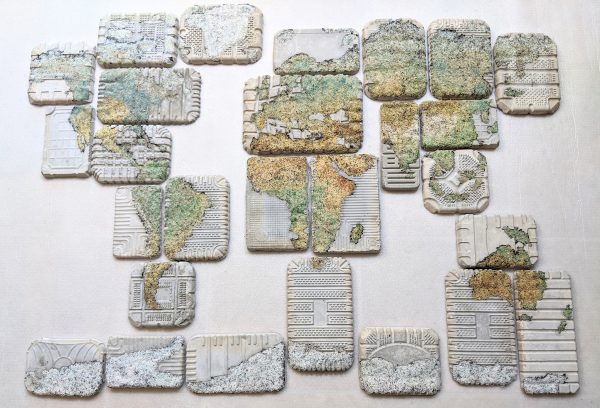
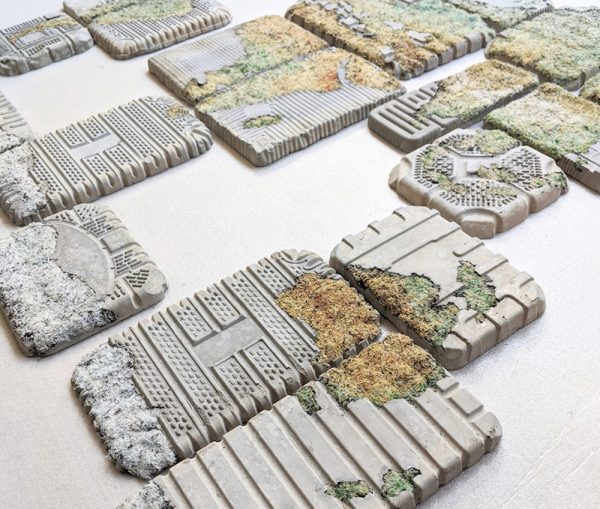
“I started using concrete in my work because I had a bag left over from a building project. I love the contrast with the textiles and the way it captured the embossed patterns and logos on the plastic waste giving them a sense of permanence that visually isn’t the case with light and often transparent plastic even though the truth is that it will in fact last centuries. I like how the concrete is able to represent the coastal rocks but also the urban man-made environment. To limit my waste, I use my offcuts to make jewellery and mini-art.”
There is so much thought injected into her work, I personally wonder how she sleeps at night, her brain must never stop in order to make sure everything is used for a reason and always without a conscience.
Find out more!
Due to her part in so many groups and organisations, there will always be a time and a place to see her work….
She is a member of Prism Contemporary Textiles Collective, ArtCan, Society for Embroidered Work, Precious Collective and a graduate member of Design Nation. Recent winner of Comme Ca Open.
She is also a part of many projects, take for example the Green Loop Project Art Trail – a series of mixed media sculptures commissioned by Fylde Council to explore the issue of plastic pollution on the Fylde Coast; hosted by local businesses in Kirkham and St. Anne’s on the Sea to promote their sustainable products and services.
And, of course, you can follow Nerissa on Instagram or visit her website!
So, what are you going to change or vocalise in your art? It has certainly made me think about making with meaning – what is your interpretation?

